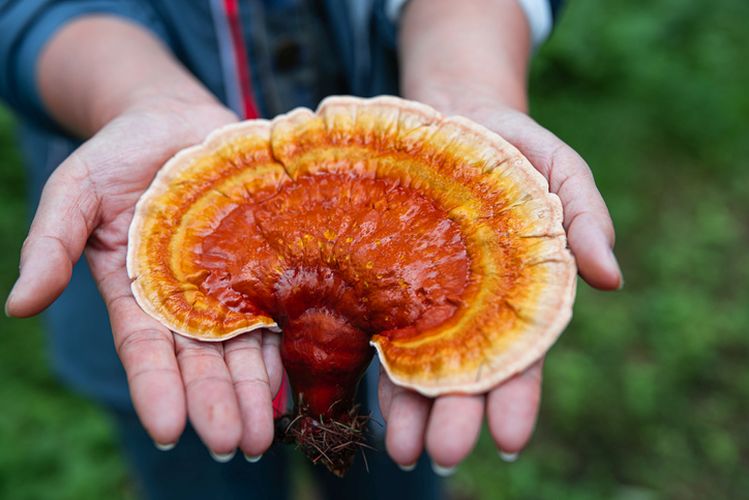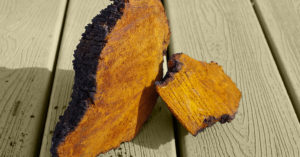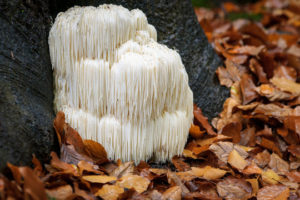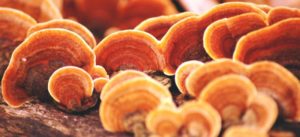No products in the cart.
The Vital Science Blog
Starting Living Your Best
- Premium Fitness Updates
- Exclusive Discounts
Strains for your brains – 3 Medicinal mushrooms that improve brain health and promote cognition

Strains for your Brains
3 Medicinal mushrooms that improve brain health and promote cognition
Dwayne N. Jackson, PhD
Mushrooms have been ingested by humans for thousands of years as food and as medicine. A recent report estimated that there are about 27,000 species of mushrooms, and among them, approximately 10% are identified as edible.
Of the edible mushrooms, there about 270 species that are currently considered to have medicinal potential and are hypothesized to play a significant role in human wellness.
Over the past decade, research investigating medicinal mushrooms as treatments to improve brain function has been exploding. Although such research is currently in its infancy, science is unraveling the nootropic (“brain-boosting”) potential of several species of medicinal mushrooms.
It’s never too early to protect brain function: Cognitive skills begin to decline at younger ages than expected.
The latest research tells us that we shouldn’t wait for signs of cognitive issues to occur before we start to focus on brain-healthy behaviours. In fact, although most research on brain health has been carried out on middle-aged and older adults, the latest research shows that even mid-life brain function can be boosted by engaging in brain-healthy practices in your 20s and 30s.
Have no fear, fungi are here!
Eating a healthy balanced diet, exercising daily, maintaining a healthy level of body fat, and minimizing “bad stress” are 3 fundamental ways to protect our brain and body from oxidative and inflammatory insults that diminish our cognitive skills.
If you want to ‘level-up’ your brain health, I suggest adding research backed medicinal mushrooms to your cognitive health strategy!
Based on research, here are 3 functional edible mushrooms that support cognitive health:



1) Lion’s Mane (Hericium erinaceus)
Main bioactive compounds: Hericenones and erinacines. Erinacine A, is a powerful antioxidant that targets brain neurons.
Main effects in the brain:
- Decreases neuroinflammation & brain cell death
- Enhances the effects of nerve growth factor (NGF), which promotes regrowth of brain cells
- Increases brain catecholamine levels, which improves neurotransmitter balance and brain function
Reported to improve:
- Aging related cognitive decline
- Disease related cognitive decline
- Depressive symptoms
- Neuropathic pain
- Disease related motor (movement) deficits (e.g., Parkinson’s disease)
How to use:
Whole mushroom (1:1 extract): 1 g, 3x per day with meals or 3 g in single dose with breakfast. If using a concentrate, adjust dose according to concentration.
2) Reishi
Bioactive compounds: alkaloids, polysaccharides (α/β-D-glu- cans), polypeptides, triterpenoids, fatty acids, ergosterols and cholesterols, neucleosides (adenosine, inosine, uridine), nucleotides (guanine, adenine), various ganoderic acids (A, B, C)
Main effects in the brain:
- Anti-inflammatory
- Neuroprotective
- Proliferation of neural progenitor cells
- Improves synapses (neural communication)
- Increased acetylcholine levels
Reported to:
- Promote relaxation
- Reduce anxiety
- Decrease depressive symptoms
- Improve cognition and brain function
How to use:
Whole mushroom (1:1 extract): 3-6 g/day, taken 1x (morning with breakfast) or split into 3 doses to be taken throughout the day with meals. If using a concentrate, adjust dose according to concentration.
3) Chaga (Inonotus obliquus)
Bioactive compounds: Polysaccharides, polyphenols, triterpenoids, melanin, oxalic, gallic, protocatechuic and p-hydroxybenzoic acids
Main effects in the brain:
- Anti-inflammatory
- Antioxidant
- Immunomodulatory
- Immunoprotective
- Decreased acetylcholinesterase activity
- Improved acetylcholine levels
- Decreased malondialdehyde and nitrite levels
Reported to:
- Reduce fatigue
- Improve gut microbiome
- Improve learning and memory
- Improve cognitive dysfunction
How to use:
Whole mushroom (1:1 extract): Use 0.5 to 1.5 g daily, taken 1x (morning with breakfast) or split into 3 doses to be taken throughout the day with meals. If using a concentrate, adjust dose according to concentration.
References
Li H, Tian Y, Menolli N Jr, Ye L, Karunarathna SC, Perez-Moreno J, Rahman MM, Rashid MH, Phengsintham P, Rizal L, Kasuya T, Lim YW, Dutta AK, Khalid AN, Huyen LT, Balolong MP, Baruah G, Madawala S, Thongklang N, Hyde KD, Kirk PM, Xu J, Sheng J, Boa E, Mortimer PE. Reviewing the world’s edible mushroom species: A new evidence-based classification system. Compr Rev Food Sci Food Saf. 2021 Mar;20(2):1982-2014.
Rai SN, Mishra D, Singh P, Vamanu E, Singh MP. Therapeutic applications of mushrooms and their biomolecules along with a glimpse of in silico approach in neurodegenerative diseases.
Biomed Pharmacother. 2021 May;137:111377.
Belsky, D. W., Caspi, A., Houts, R. et al. (2015). Quantification of biological aging in young adults. PNAS, 112(30).
Kaup A. R., Xia F., Launer L. J., et al. (2018) Occupational Cognitive Complexity in Earlier Adulthood is Associated with Brain Structure and Cognitive Health in Mid-Life: The CARDIA Study. Neuropsychology, 32(8), 895-905.
Hoang T. D , Reis J., Zhu N., et al. (2016). Effect of Early Adult Patterns of Physical Activity and Television Viewing on Midlife Cognitive Function. JAMA Psychiatry, 73(1),73-9.
Reis, J. P., Loria C. M., Launer L. J., et al. (2013). Cardiovascular health through young adulthood and cognitive functioning in midlife. Ann Neurol. 73(2):170-9.
Salthouse, T. A. (2009). When does age-related cognitive decline begin? Neurobiol Aging. 30(4):507-14.
Younes, L., Albert, M., Moghekar, A., Soldan, A., Pettigrew, C., & Miller, M. I. (2019). Identifying changepoints in biomarkers during the preclinical phase of Alzheimer’s disease. Frontiers in Aging Neuroscience 11: 74.
Zeki Al Hazzouri, A., Elfassy T., Carnethon M. R., Lloyd-Jones D. M., & Yaffe K. (2017). Heart Rate Variability and Cognitive Function In Middle-Age Adults: The Coronary Artery Risk Development in Young Adults. Am J Hypertens.31(1):27-34.
Zhu N., Jacobs D. R. Jr, Schreiner P. J., et al. (2014). Cardiorespiratory fitness and cognitive function in middle age: the CARDIA study.
Neurology. 82(15):1339-46Rizwan Ahmad, Muhammad Riaz, Aslam Khan, Ahmed Aljamea, Mohammad Algheryafi, Deya Sewaket, Aljawharah Alqathama. Ganoderma lucidum (Reishi) an edible mushroom; a comprehensive and critical review of its nutritional, cosmeceutical, mycochemical, pharmacological, clinical, and toxicological properties. Phytother Res. 2021; 1-33, Aug 19.
Chang ST, Buswell JA. Development of the world mushroom industry: Applied mushroom biology and international mushroom organizations. Int J Med Mushrooms. 2008;10:195–208.
Medicinal mushrooms as a source of antitumour and immunomodulating polysaccharides. Appl Microbiol Biotechnol. 2002;60:258–74.
Szychowski KA, Skóra B, Pomianek T, Gmiński J. Inonotus obliquus – from folk medicine to clinical use. J Tradit Complement Med. 2020 Aug 22;11(4):293-302.
Lu Y, Jia Y, Xue Z, Li N, Liu J, Chen H. Recent Developments in Inonotus obliquus (Chaga mushroom) Polysaccharides: Isolation, Structural Characteristics, Biological Activities and Application. Polymers (Basel). 2021 Apr 29;13(9):1441..
SHARE THIS POST:
Coaching Subscriptions packages
Starting Living Your Best
- Premium Fitness Updates
- Exclusive Discounts
If you’re interested in staying fit, eating healthy, and living a healthier life, then you should join my newsletter! I’ll be sending out regular updates on fitness nutrition and health, so you can stay informed and make the most of your health.
